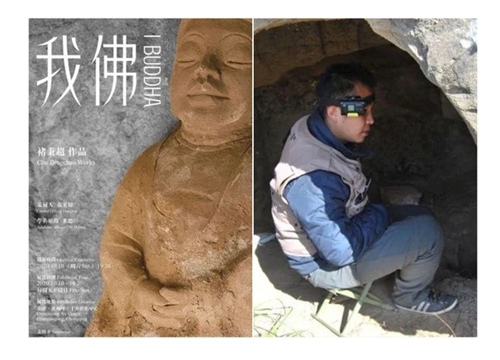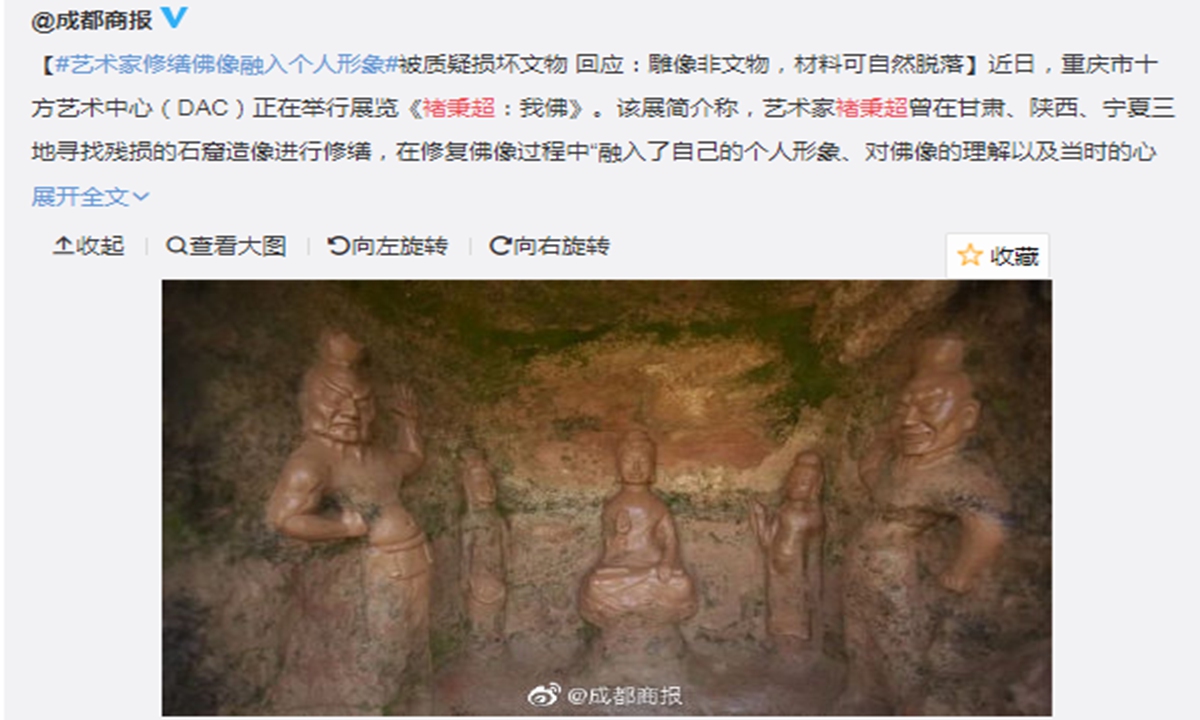Chinese artist causes uproar by ‘restoring’ discovered ancient relics
By Chen Xi Source: Global Times Published: 2020/10/15 19:36:12

Screenshot from Sina Weibo
A photography exhibition about the restoration of some statues at an ancient grotto was held in Southwest China's Chongqing Municipality on Saturday but was closed after only three days after numerous Chinese netizens criticized the photographer for "restoring" the cultural relics without having the proper credentials or training.
On Wednesday, Yu Chun, a deputy professor at the School of Cultural Heritage in Northwest University, confirmed after examining the photos that the grotto statues restored by the photographer, Chu Bingchao, were indeed ancient cultural relics, and that any unqualified or non-professional person who attempted such restorations without the proper authorization might need to bear certain legal repercussions, Chinese News site The Paper reported on Thursday.
At present, the security supervision office of the Gansu Provincial Cultural Relics Bureau is conducting an investigation into the incident, the bureau announced on Wednesday.
The exhibition displayed before and after comparison shots of the "restoration" Chu carried out since 2014 on more than 50 grotto statues he found in Northwest China's Gansu Province, Shaanxi Province and the Ningxia Hui Autonomous Region.
"I did not just repair the statues, but incorporated my personal imagination and understanding of Buddha statues, and my mood at the time into the statues during the repairs," the 34-year-old artist said in his introduction to the exhibition.
The exhibition, however, was thrown into question by many netizens who believed that Chu's actions had actually damaged these cultural relics.
"Restoration of cultural relics cannot be carried out by just any artist but must be completed by a professional archeology expert. It seems that this artist lacks common sense," one Chinese netizen commented on China's Twitter-like Sina Weibo.

Screenshot from Sina Weibo
In response, the exhibition's curator Zhang Hongwei and Chu explained that the cultural relics that Chu restored were found in a grotto that had not been designated as an officially protected location by the local archeology authority. Meanwhile, the material used for the restoration was unpainted clay which can be removed from the statues without damaging them.
Reached by a CCTV reporter on Tuesday, Chu said that he "had not gained the understanding of the public," and did not want to share more about his feelings.
Jia Xiaobing, a research fellow at the Institute of Archeology in Chinese Academy of Social Sciences, told the Global Times on Thursday that even if cultural relics such as the statues are found out in the wild they are still considered state property.
"If someone finds relics that are not yet officially protected, he or she should report them to the local archeology authority. They are not allowed to make any adjustments to the relics," Jia said, adding that the restoration of cultural relics must meet certain special requirements.
One employee at the Gansu Provincial Cultural Relics Bureau said that the province has many immovable cultural relics that have been registered but are not yet protected by cultural relic protection units. However, even if cultural relics are not registered, as long as the cultural relics are of cultural value, private restoration is not allowed, according to The Paper.
Yu preliminarily judged from the photos that the statues restored by Chu are ancient cultural relics or Buddhist statues from the Tang Dynasty (618-907). He believes that despite the use of clay, the restoration may still have damaged them.
Posted in: ART